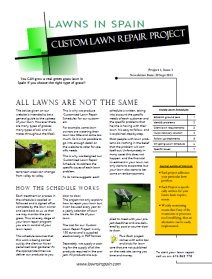Lawn Thatch and Thatch Removal
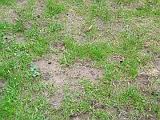
|
Thatch is defined as an accumulation of dead and living plant material (stems, roots, and shoots) that develops between the soil surface and the green leaves of a
lawn. Thatch development is a natural process that occurs during normal growth of
a lawn. Although some thatch is desirable, thatch becomes undesirable when it exceeds a depth of 1/2 inch.
Read article: "The Link between Thatch and Underwatering" |

|
1. Topdressing once or twice a year with a 1/4 inch layer of topsoil is the most effective method of thatch reduction. This practice increases the thatch decomposition rate. Heavier applications of topsoil may cause layering, which restricts water, air and fertilizer movement in the soil. However, a top-dressing is also the least practical cultural practice because of the cost of specialized equipment, top-soil and
labour. Topdressing can also be a source of weed seeds.
2. Vertical mowing is the most common method of thatch removal. This specialized mower has evenly spaced blades that revolve perpendicularly to the turf and slice into the thatch to mechanically remove it. It is very important to use proper blade spacing when vertically mowing different
grasses. Read
more about de-thatching different grasses ... ![]()
Bermudagrass may be mowed down to the soil level in several directions without killing the lawn because of underground rhizomes.
Centipedegrass and St. Augustinegrass should only be vertical mowed in one direction to avoid removing too much plant material and reducing the rate of recovery.
If a thatch layer exceeds 1/2 inch depth, the turf area should be carefully vertically mowed and allowed to recover between mowings.
Vertical mowing is best done in the spring after
green up where the grass is growing rapidly and when the weather is not so hot that
lawn water needs are high.
Hide this content.
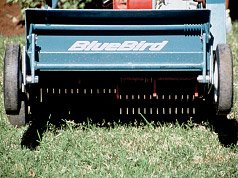
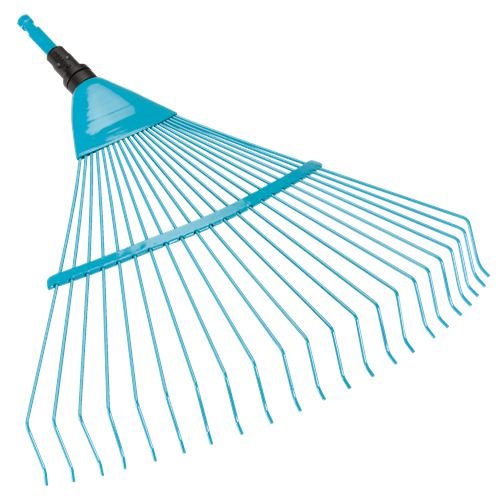
3. Power raking uses the same mechanical principles as vertical mowing. Flexible, spring steel wires revolve at high speed vertically through the turf and loosens the debris for removal. Power raking can be useful for loosening debris, but it is not as effective as vertical mowing.
4. Scalping is a poor substitute for vertical mowing, but its use, especially in early spring may delay the need for vertical mowing where build up is minimal. Scalping is a procedure in which the
grass is mowed at a much lower height than normal. Scalping heights will vary with
grass species. Grasses with rhizomes, like bermudagrass and zoysiagrass, may be scalped down to near the soil surface. Centipedegrass and St. Augustinegrass spread by above-ground runners called stolons. Removing these stolons would kill the turf. Zoysiagrass is not as sensitive to scalping as centipede and St. Augustine, but it is more sensitive than bermuda. Scalping below the crown or green growing points of zoysia will cause excessive damage.
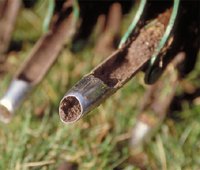
5. Core aeration benefits thatch decomposition primarily through the indirect effects that stimulate bacterial activity. Core aeration also relieves soil compaction and increases air and water movement into the soil. This is best accomplished by a power aerator that has hollow tines or spoons, so it removes a soil core 2 to 3 inches deep and 1/2 to 3/4 of an inch in diameter. Core aeration should be done during periods of active plant growth and when the soil is moist enough to allow deep penetration. Applying a fertilizer as recommended by soil analysis after a cultural practice will increase the rate of turf recovery.
 Q/A's
Q/A'sHow do I know it's time to de-thatch my lawn?
Do I need special equipment for grass de-thatching?
When should I de-thatch?
What should I do after I'm done de-thatching? How do I know it's time to de-thatch my lawn?
Read the answers... ![]()
If you have more than a half an inch of thatch, or decomposed plant material, its time to
de-thatch. If your lawn is spongy or lifting away from the soil, its
time to de-thatch. If you examine your grass you should be able to determine if the grass is growing on soil or thatch.
Do I need special equipment for grass de-thatching?
Yes! The power tool you rent to de-thatch should have vertical blades. Its also critical you find vertical blades that are adjustable left to right, so you can put at minimum of 3" between the blades. This ensure that the stolons aren't cut permanently damaging your lawn.
When should I de-thatch?
Only de-thatch when your lawn is growing vigorously. This is usually in the June to July time frame.
What should I do after I'm done de-thatching?
Once you're done de-thatching give your lawn a healthy dose of fertilizer and water as
it's been traumatized and needs some extra nutrients to recover.
Now that the thatch has been removed your grass should flourish. All the restriction of air, water, and fertilizers
having been removed.
 For more tips on de-thatching a lawn, see our Custom
Lawn Repair Project it contains step by step advice on
repairing your lawn. Each project is tailored to suit your lawn and
lists each product and step by step processes that are required to get
your lawn back to tip top health.
For more tips on de-thatching a lawn, see our Custom
Lawn Repair Project it contains step by step advice on
repairing your lawn. Each project is tailored to suit your lawn and
lists each product and step by step processes that are required to get
your lawn back to tip top health.
